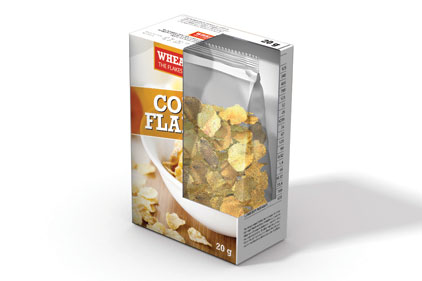Food and Beverage Packaging: Why is migration in packaging a concern that food and beverage processors should be aware of?
Jim Bishop: In packaging, migration is the movement of compounds from any of the materials in the packaging structure into the packaged product or the surrounding environment. The term “low migration” in sensitive consumer packaging is commonly used to designate materials and substances used in the packaging structure which will not contain compounds which would easily move – or migrate – from the packaging into the product or surrounding inside the packaging environment.
A migration risk may exist when printed inks, coatings and adhesives are in close proximity to packaged food, in which there is not a functional barrier between the food contact side of the packaging and the product. The levels of any compounds detected in suitable condition-of-use migration testing are below the U.S. Food & Drug Administration and European guidelines and do not have an effect on the properties of the packaged product.
Possible sources of migration of compounds can come from paper, press room hygiene, fountain solution, press wash, type of inks and coatings, press operation procedures, and the environment around the printing, carton storage and transportation process. The best way to ensure lowest level of post-odor, off-flavor and residual extractables is to control each facet of the supply chain and printing process.
A careful choice of the right substrate and chemicals, combined with best use application and handling practices helps to minimize chemical migration risk.

|
|
Low migration inks help lower migration risks that may exist when printed inks are in close proximity to packaged food, if there is not a functional barrier between the food contact side of the packaging and the product. |
FBP: How long has Sun Chemical been manufacturing low migration inks?
Bishop: While market awareness on issues surrounding migration of compounds causing consumer and regulatory concern from food packaging has been increasing recently; Sun Chemical has been designing, testing and promoting the use of technology and products for low migration packaging for years.
Recently there has been significant concern in Europe about the migration of printing inks into packaged foods, which increases demand for low-migration inks and coatings. As this demand becomes more widespread, it is critical that package printers and brand owners understand the issues surrounding migration in food packaging and both the low-migration ink and coating products available and the processes and testing required to ensure proper implementation.
Sun Chemical complies with the FDA and European Commission guidelines for food and other regulated packaging and has developed a line of products and procedures to support safer food packaging applications.
FBP: What does Sun Chemical offer to help reduce migration risks on packaging?
Bishop: Sun Chemical’s SunPak™ LMQ (low migration quality) products help address the risk brand owners face in packaging, where compounds from materials in the packaging structure can migrate into the food product or the surrounding environment.
These products exhibit very low odor, off-flavor and migration levels, and offer a comprehensive solution to brand owners and converters who are looking for ways to address migration concerns for food applications. The Sun Chemical solution combines ink and coating chemistry, fountain solutions, press wash, press preparation procedures, lithographic guidance and analytical support to help converters meet the most demanding requirements.
Sun Chemical (www.sunchemical.com), a member of the DIC group, is the world’s largest producer of printing inks and pigments and a leading provider of materials to packaging, coatings, plastics and other industrial markets.




